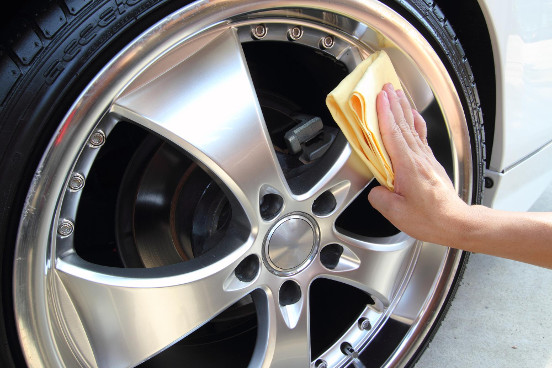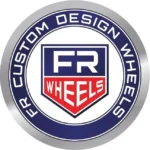Our advice for the care and maintenance of alloy rims
Alloy rims are eye-catching and increase the value of the vehicle. However, to get the most out of them, you need to know how to properly maintain them and have them checked regularly. Learn all there is to know about the care and maintenance of alloy rims as well as repair regulations.
Alloy rims are one of the light alloy rims that have established themselves for almost all car models, especially new vehicles. With the right packaging, they will enhance any type of vehicle. But weather-related corrosion, dirt and scratches from a collision with the sidewalk can undermine homeowners’ enjoyment. Many drivers consider “home” repairs to be a common sense solution.
- Advantages and disadvantages of alloy rims
The main advantages of light alloy wheels over steel rims are their visual appearance and tendency to increase the value of the vehicle, on the other hand, their purchase price is quite high. Here is a non-exhaustive list of the positive and negative points for this type of rim:
- Weight: Originally, alloy rims got their designation of light alloy rims from their low weight. This has long been seen as an advantage over steel rims. Today, steel rims and alloy rims are about the same weight, so this advantage is no longer valid.
- Appearance: Unlike steel rims, there are a large number of models of alloy rims. From the most sober shapes, through sports to the most original with colorful design, there is something for everyone. They give a personalized charm and enhance the vehicle.
- Price: Compared to steel rims, even basic models of alloy rims have a much higher price. If the rims are maintained properly, the value of the vehicle will increase.
- Wear: Alloy rims are often more fragile than steel ones. Salt, brake dust and gravel damage them quickly. Thus, many drivers use steel rims in winter.
- Maintenance of alloy rims
Regular cleaning helps prevent the build-up of dirt that tends to stick to the wheels under the effect of the sun. There are cleaning products and tools that can take care of alloy rims. It is recommended to wear protective gloves, regardless of the product used.
The preparation
Alloy rims must be cooled before cleaning. In this sense, it is possible to run clean water to remove the coarsest dirt and brake dust. The use of a high pressure water jet is particularly suitable here as it will remove the most stubborn dirt. In addition, this eliminates the need for a brush which could damage the rim.
Choose a suitable cleanser
In addition to car shampoos, special rim cleaners are available in specialty shops. It is best to get advice on site to determine which product is best suited for your rims. Consult the instructions for use and use a non-acidic cleaner to avoid damaging the rims. The exposure time is also important. This must be observed in order to optimize the result and avoid damage to the surface of the rim.
Final touches with the ideal tool
If the degree of soiling of the alloy rims is high, you can use soft brushes to remove the last traces of dirt. Hard-to-reach areas can be cleaned with a toothbrush. In the latter case, it is not advisable to rub insistently.
Polishing
Polishing with a coat of varnish helps protect the rim from soiling for a season and gives the rim a brand new appearance. You can also do it yourself. It is important to degrease the rim beforehand. This is the only way for the lacquer to stick effectively to the surface.
- What damage can be repaired?
After cleaning, small damage that does not disappear with water and cleanser can sometimes be seen. For example, small scratches after touching the edge of the sidewalk or a visual defect. Repair is permitted but is subject to strict rules. It is therefore legally permissible to repair damage up to a depth of one millimeter and at a minimum distance of 50 cm from the edge.
- Repair visual defects of alloy rims yourself
Corrosion damage and slight surface damage that does not affect the base metal can be repaired yourself. The following tools are required:
- Sandpaper of various grit sizes, from 200 to 1000
- Tape
- Microfiber cloth
- Cleaning product and a little water
- Alloy spatula
- Rim varnish (clear varnish for shiny rims)
Step 1: Disassembly and cleaning
Before proceeding to repair the alloy rim, it must be removed. Then place the removed rim on a stable surface. In order to create a suitable workspace. Use rim cleaner and water, then dry it completely.
Step 2: Sand the scratches
Once the rim is clean and dry, you can begin repairs. Place duct tape around damaged areas to prevent further damage. The tire must be protected as a priority since it must above all not come into contact with sandpaper or varnish. Start by sanding with the coarsest sandpaper. Then you clean again with water and the microfiber cloth. This can be repeated with increasingly fine sandpaper, until the worked areas are smooth again.
Step 3: Recapping and sanding with water
The grooves still present are filled in with an alloy spatula. After drying, sanding with a fine sandpaper and water, optimizes the results. Use 1000 sandpaper to help you
Step 4: Varnishing and assembly
After all superficial damage has been treated, the rim can be polished with varnish. You can get the right mix of colors at a specialty store. For matt rims, it suffices to apply several coats of varnish. For alloy rims, you can apply one to two coats and then spray clear varnish for polishing. Once dry, you can put the rim back on the vehicle.
- Repair of alloy rims by a professional
The repair and professional conditioning of alloy rims is carried out in specialized companies which operates in accordance with applicable laws. It guarantees the safety of the repaired rim. Then, polishing with colored and transparent varnish is carried out in order to optimize the visual appearance of the rim and protect it from dirt.



